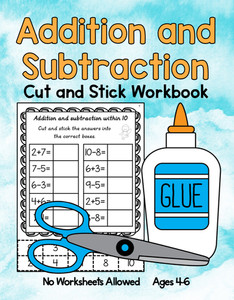The Definitive Guide to Teaching Addition to Reception and Year 1
- No Worksheets Allowed
- Feb 22, 2024
- 4 min read
Updated: Nov 18, 2024
Whether you're a teacher or a parent, it's important to teach addition in a way that's engaging and easy to understand. Initially, children should work with small numbers and learn to confidently add within 5. They will then progress to addition within 10 and then addition within 20. There's no need to rush your child into working with larger numbers! Here are the expectations...
By the end of Reception, children are expected to:
automatically recall (without reference to rhymes, counting or other aids) number bonds up to 5 (including subtraction facts) and some number bonds to 10, including double facts (EYFS Statutory Framework, December 2023).
By the end of Year 1, pupils are expected to:
read, write and interpret mathematical statements involving addition (+) and equals (=) signs
represent and use number bonds within 20.
add one-digit and two-digit numbers to 20, including 0.
solve one-step problems that involve addition, using concrete objects and pictorial representations, and missing number problems. (National Curriculum, September 2021)
By incorporating the following activities into your teaching, you can make learning addition enjoyable for your little learners!

Finding One More
A good first step to teaching addition is to practise finding one more than a number. Give your child a digit card (0-4) and ask them to represent the amount with objects. Can they then find one more than that number? Use language such as, 'How many are there now?' and 'What is the number after...?'

Part-Whole Model
With part-whole models, children break down a number into parts and then put them back together to form the whole number. They can physically move objects to show how adding two numbers creates a larger sum. This helps children to understand the different compositions of numbers. For example, they can see the different ways to make 3; i.e. 3+0, 2+1, 1+2 or 0+3. You can also use part-whole models that have three parts to show the addition of 3 numbers to make a whole.

Hands-On Addition Activities
One of the best ways to teach addition is through hands-on activities. Use manipulatives like counters, toys, dominoes and dice to help your child understand the concept of adding numbers together. Ask them to combine the two groups of objects by counting them all. This will help them to see the physical representation of addition.

Tens Frame Addition
Tens frames are another great tool for teaching addition to young learners. Tens frames have 10 boxes arranged in two rows of 5. By using tens frames, children can visualise the numbers they are adding and understand the concept of regrouping. You can use tens frames to start with simple addition problems and gradually increase the difficulty level as children progress.

Adding by Counting On
Counting on is the next stage in teaching addition. With counting on, encourage your child to start with the largest number and then count on to find the total. Ask them to count on from the first group of objects to the second group of objects to find the total. You may need to cover the largest group with a digit card to help your child with this concept.

Number Line Addition
Number lines are great tools for teaching addition using the counting-on strategy. They give a visual representation of numbers in a sequence, usually from 1 to 10 or 1 to 20. To use a number line to add, start with a number and then count on by moving along. For example, if the problem is 3 + 2, you would start on number 3 on the number line and then count on two more numbers, which would give you 5.

Doubles and Near Doubles
Doubles and near doubles are important concepts that can help children to learn and memorise addition facts. Doubles are addition problems where both numbers are the same, and near doubles are addition problems where the two numbers are close to being the same.

Recording Additions
At an early stage, children record their additions by drawing pictures. They might draw two sets of objects or perhaps draw their own part-whole models. Once children are confident with practical addition, they can begin to record more formally. To record number sentences for addition, children use the "+" symbol to represent addition and the "=" symbol to represent 'is equal to'.
Teaching addition to young learners can be a fun and engaging experience for both parents and teachers! By incorporating the activities shown above, children can learn the concept of addition in a way that's easy to understand. It's important to remember that children progress at different rates, and it's fine to take things slowly! It's also important to encourage children to record their additions in a way that's appropriate for their level.
Fun Addition Resources
The No Worksheets Allowed shop is full of engaging addition games and activities!
Learn to add and subtract with these workbooks! The bingo dabber workbook is a fun way to master adding and subtracting within 5, 10 and 20. Meanwhile, the cut-and-stick workbook provides an engaging way to learn to add and subtract to 5 and 10. The workbooks support the National Curriculum.







Comments